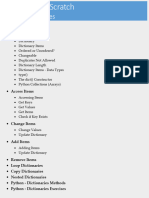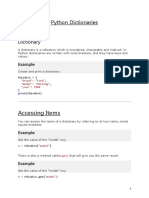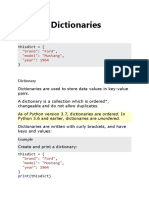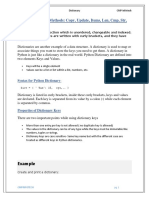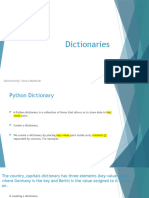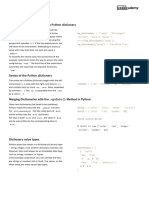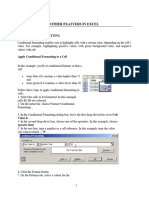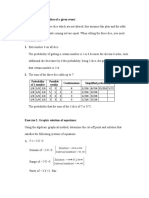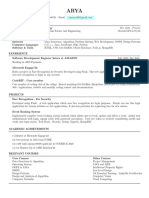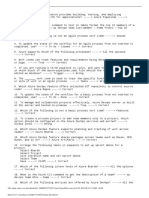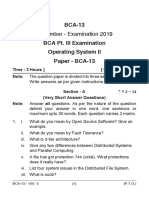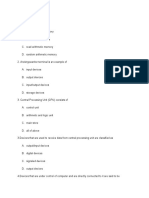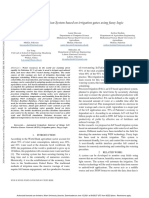0% found this document useful (0 votes)
17 views7 pagesProgram 7
The document describes a program that maps two lists into a dictionary in Python. It explains the structure and methods of dictionaries, including how to create, access, modify, and loop through them. The program includes a runtime test case demonstrating the mapping of user-inputted keys and values into a dictionary.
Uploaded by
newshunt535Copyright
© © All Rights Reserved
We take content rights seriously. If you suspect this is your content, claim it here.
Available Formats
Download as PDF, TXT or read online on Scribd
0% found this document useful (0 votes)
17 views7 pagesProgram 7
The document describes a program that maps two lists into a dictionary in Python. It explains the structure and methods of dictionaries, including how to create, access, modify, and loop through them. The program includes a runtime test case demonstrating the mapping of user-inputted keys and values into a dictionary.
Uploaded by
newshunt535Copyright
© © All Rights Reserved
We take content rights seriously. If you suspect this is your content, claim it here.
Available Formats
Download as PDF, TXT or read online on Scribd
/ 7






